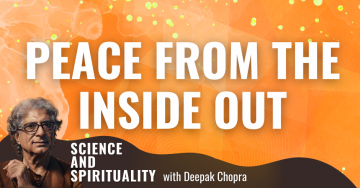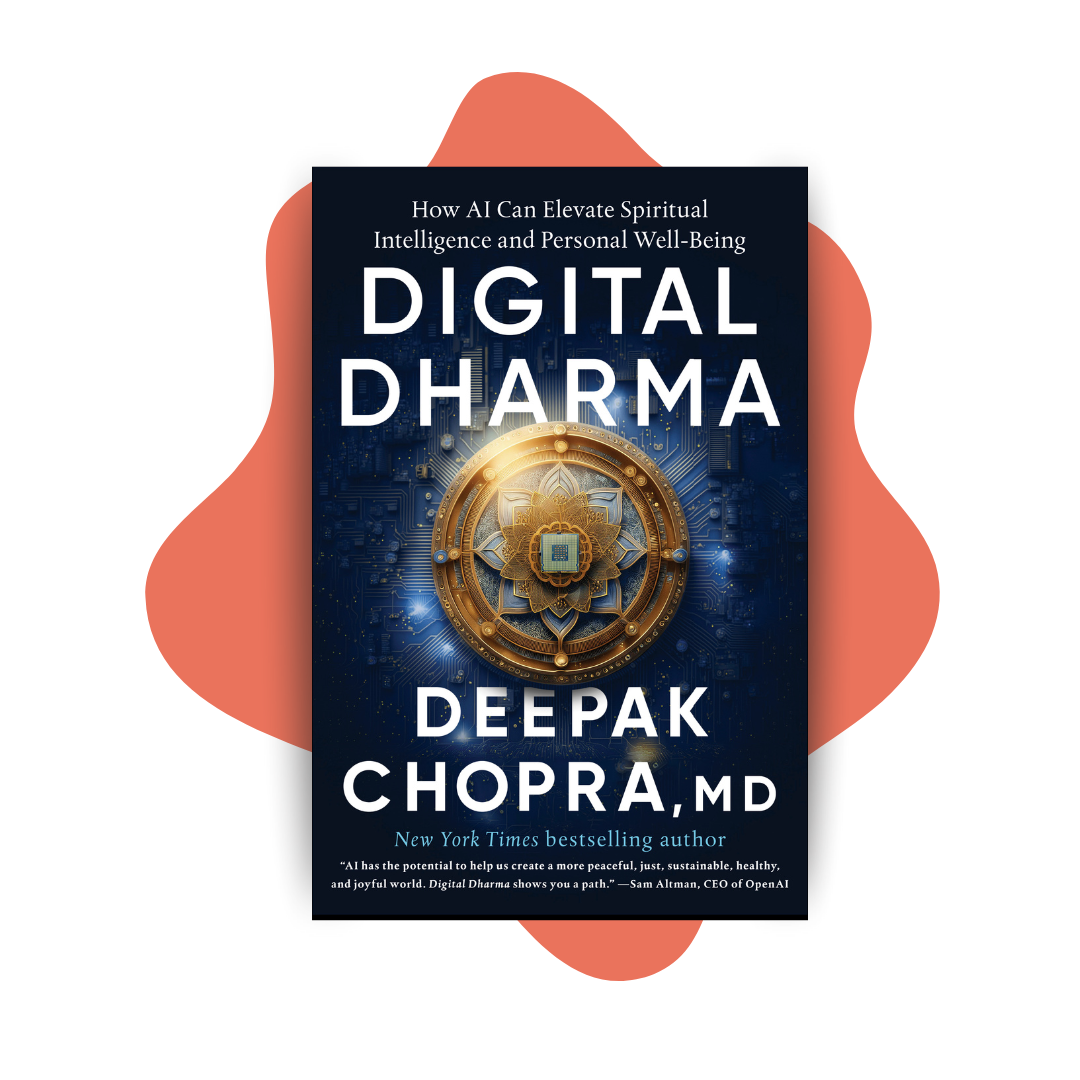Peace From The Inside Out.

This episode explores the fascinating question of where our thoughts come from. From the biological perspective, we’ll examine how the complex interactions of billions of neurons in our brains generate electrical and chemical signals that form the foundation of thought.
We’ll then look at the psychological perspective, considering how mental processes like memory, attention, and language shape our thoughts.
Finally, we’ll explore the philosophical perspective, pondering the nature of consciousness and whether thought is a fundamental property of the universe or an emergent property of complex systems like the brain.
What about the idea that our thoughts are shaped by karma, the residue of our past experiences, and how these patterns can contribute to conflict in the world?
Key topics:
- Multiple Perspectives on Thought: Biological (neural activity), Psychological (mental processes), Philosophical (nature of consciousness).
- The Role of Karma: Past experiences and their interpretations shape our present thoughts and future desires, potentially leading to conflict.
- Thought as a Source of Conflict: Conditioned thought patterns contribute to anger, hostility, and violence.
- Meditation as a Path to Peace: By transcending conditioned thought patterns through meditation, we can cultivate empathy, compassion, and inner peace.
- The Power of Thought: Our thoughts shape our reality, and by understanding their source, we can create a more peaceful world.
Listen to the podcast here
Peace From The Inside Out
Before I share my thoughts, and you’ll see why I’m using that word or phrase, I’d like to thank you for becoming part of Peace Is The Way and taking certification in it. Also, becoming a Soul of Leadership leader. For those of you who are still in a pause moment before you join, please consider becoming the peace that you want to see in the world. Only your peace can create word peace. Check out CFI.ChopraFoundation.org and join us. Let’s create that critical mass.
Tweet: Only your peace can create world peace.
The Power Of Thought
This episode’s ideas I want to share begin with the question, how are thoughts generated? How is our thinking generated? I think it’s important to know because everything that happens in our mind, in our body, and in the world collectively is the consequence of the generation of thought. If you ask a neuroscientist how thoughts are generated, the first answer is that it is a mystery and that they arise from complex interactions of billions of neurons in the brain.
Tweet: Everything that happens in our mind, in our body, and in the world collectively is the consequence of the generation of thought.
Neurons communicate with each other through electrical and chemical signals. Chemicals, also at the most fundamental level, at the level of ions in electrical activity. That’s why we say electrochemicals. These signals can form intricate patterns that represent thoughts, memories, and ideas. One theory of how thoughts are generated is that they arise from the activation of specific neural circuits.
When a particular neural circuit is activated, it produces a pattern of electrical activity that is associated with a particular thought. For example, the thought of a red apple may be associated with the activation of a circuit in the visual cortex, the back of your brain. Another theory is that thoughts are generated by the synchronized activity of neural circuits across different brain regions. When neurons in different regions fire in a coordinated manner, they can create a larger and more complex pattern of activity that is associated with thought.
In addition, thoughts generate neurotransmitters, which are chemicals that bind to receptors everywhere in the body, which also happen to be immunomodulators. Also, hormones are chemicals that are released by glands into the bloodstream, and these can affect brain activity and influence the way that thoughts are generated. Scientists will point out that sensory input from the environment can also influence the way that thoughts are generated.
For example, the sight of a red apple may trigger the thought of eating an apple. All that’s very good, but then you go a little further. If you are a scientist, what is the source of thought? What is the source of these thoughts that I’m communicating to you? Again, if you ask mainstream neuroscientists, they’ll say, “From a biological perspective, thoughts are seen as the product of neural activity in the brain. When we think neurons in different parts of the brain get activated but from a psychological perspective, thoughts are seen as the product of mental processes such as memory, attention, and language.
When we think, we draw on our memories. We focus our attention and we use language to represent thought. There’s a philosophical question, and that is, what is the ultimate source of thought? This is a question that has been asked forever. This question is seen as much more fundamental, and it is about the nature of consciousness. Some philosophers believe that consciousness is a fundamental property of the universe, while others believe it is an emergent property of complex systems such as the brain.
There are many other perspectives, the role of environment, etc., relationships, and much more. Is thought a result of quantum entanglement in the brain? That’s a very important question. A lot of scientists do believe that quantum entanglement could play a role in the generation and the processing of thought. It has been suggested that entangled particles could be used to represent the different states of a neuron. If two neurons are entangled, then a change in the state of one neuron could instantly cause a change in the other neuron. This could allow for rapid and efficient transformation of information between neurons.
Some scientists have also suggested that this is a phenomenon that occurs in consciousness alone. That consciousness is the ultimate ground of all experience and consciousness functions similarly to a quantum field with particles appearing as determined by the Uncertainty Principle. They appear and disappear very rapidly. I’m sure that’s the experience of your thoughts, but sometimes thoughts get repetitious because of habits of the conditioned mind.
Is there a solution to this conundrum? I think there is. First of all, ask yourself what generates the thought, which asks, “What is the original thought? What is it that asks how thought is produced? Does the brain ask itself how thought is produced? If so, how does a material object compose a matter with carbon, hydrogen, oxygen, nitrogen, and a few other chemicals, and mostly water and fat? How does a physical object ask a question about itself? That’s the most important thing to ask right now.
Karmic Conflict
I think if we go a little deeper, I think we can make a case that the brain is a human construct of the mind. The brain is what the mind looks like as a perceptual object, or even better, the brain is what the mind looks like as a perceptual activity. What is the mind? The mind is a modified conditioning of pure consciousness, which is infinite possibilities, self-regulation, and non-local correlation or entanglement.

Thoughts Shape Reality: The brain is what the mind looks like as a perceptual activity.
It embodies the Uncertainty Principle, and it requires attention and intention. Some of these points have already been made in my statements a little while ago. The mind looks very much like the conditioning of pure consciousness as even a quantum mechanical expression of the conditioned mind. The conditioned mind is the result of karma. Karma means past experience and the interpretation of past experience. Karma projects into the future as desired. Birth, karma, memory, and desire are entangled as one process. Karma is all the experiences we’ve had in the past.
Unfortunately, when we see the conflict in the world, then we can see that the conflict is the traumatic experiences of different people going back to the hunter-gatherer times and the beginning of culture, identity, religion, politics, kingdoms, especially the conditioned religious mind that is tied to its dogma, ideology, and story as a result of past trauma.
As I mentioned before, nobody has not experienced trauma. We are all conditioned minds and our trauma recycles as anger, hostility, guilt, shame, and mistrust. It then recycles as inflammation, chronic disease, and mental illnesses, which have been proposed in the past. In other words, thought, karma, memory, desire, and imagination are ultimately the result of all conflict in the world. It is thought that ultimately creates our patterns of speech, action, and behavior. Is there a solution to this?
I think there is. First of all, understand that your mind is entangled with all the other minds, but your mind only agrees with minds that agree with you, who have the same conditioning, karma, or memories, or how those memories project into future, future patterns of thinking and behavior. In other words, the conflict in the world is a karmic conflict.
The only way to find a solution is to transcend the whole karmic process by going to the source of thought. The source of thought before it’s conditioned is infinite possibilities. I mentioned in a previous post that thought emerges from infinite possibilities into clouds of probability, then the internal dialogue, and finally, speech. When speech occurs, that’s the collapse of the wave function. As infinite possibilities, thought is potential for thought. At the clouds of probability, it is coalescing into a particular pattern of thought.

Thoughts Shape Reality: The conflict in the world is a karmic conflict.
As the internal dialogue, you hear these patterns in your consciousness. You have the ability to choose, but once you speak and act, then it’s solidified into the ecosystem of conflict. On a practical level, meditation and the transcendence of thought allow us to experience our universal nature where there is only empathy, compassion, love, joy, and equanimity. Ultimately, the resolution of all conflict. Think about this and reflect on it. You’ll immediately realize that your thought patterns are a result of past conditioning.
Tweet: Meditation and the transcendence of thought allow us to experience our universal nature where there is only empathy and compassion and love and joy and equanimity and ultimately the resolution of all conflict.
Then ask yourself, is what I’m thinking fundamentally true? How do I know it’s fundamentally true? What if what I’m thinking is not fundamentally true? What would my true self do in this situation? What is the opposite of this conflicting thought that I’m having? If you go through this process, you can become a peacemaker and you can bring peace to yourself. You can bring peace to your family.
You can bring peace to your community. You can bring peace to your nation and you can bring peace to the world because all these things that we call me, mine, my family, my community, my country, my nation, my world, and my universe, all begin with a thought. If we unravel the mystery of thought, we can collectively create a peaceful, just, sustainable, healthier, and joyful world. Let me know your thoughts.
Important Link

